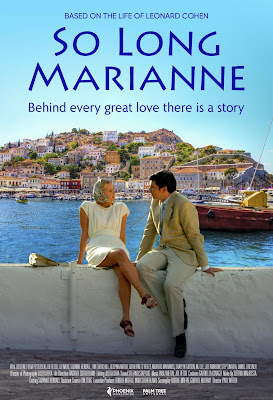Australia: Come Fly with Me is a three-part documentary film which premiered in 2020. In 2024, it was shown on Australian television (SBS).
The timing is significant. This film premiered in 2020 in order to mark and celebrate the 100-year anniversary of aviation in Australia, which began in 1920.
Here is some basic information about this film:
** Series producer: Bernice Tony
** Series director: Greg Appel
** Series presenter: Justine Clarke
** Language: English
** Subtitles: English
** Run time: 3 x ca. 53 minutes = ca. 159 minutes
As stated above, there are three episodes.
Here are the headlines:
** Episode 1 = Danger
** Episode 2 = Desire
** Episode 3 = Discovery
The first episode covers the early history of aviation in Australia: the time from 1920 until the 1950s.
The second episode covers the history of aviation during two decades: the 1960s and the 1970s.
The third episode covers the history of aviation from the 1970s until 2020, with special focus on three aspects: the Vietnam war, flights to Bali, and the Covid-19 pandemic.
In each episode, host and presenter Justine Clarke presents some basic facts about the aviation industry in Australia.
She shows us some airplanes and interviews some people who have a personal connection with the main topic: Former flight attendants and pilots.
What do reviewers say about this film?
On IMDb it has a rating of 82 percent
Two user reviews are posted on IMDb
Here are the headlines and the ratings offered:
Number one
“A look at the social impacts of the aviation industry in Australia”
According to this reviewer, the series has too much focus on “air hostesses and women moving into airline pilot careers.”
This reviewer offers a rating of 60 percent
I have to ask: How can the series cover the history of the aviation industry in Australia without mentioning the role which women had and have in this industry?
If the role of women in the aviation industry had been excluded, this fact would - with good reason - be regarded as a serious flaw.
Number two
“Feel like I was at Sunday school”
This reviewer says:
“I don’t need to be taught how great First Nations people are, I don’t need to be beaten to understand that women have a place in the airline industry.”
This reviewer offers a rating of 20 percent
I have to ask: how can the series cover the history of the aviation industry in Australia without mentioning the role aboriginals had and have in this industry?
If the role of aboriginals in the aviation industry had been excluded, this fact would - with good reason - be regarded as a serious flaw.
In other words: the complaints made by these reviewers are not justified. It is not fair to offer a low rating, just because the role of women and aboriginals is mentioned in the film.
This film covers the history of the aviation industry in Australia during a period of a century: 1920-2020.
The producers can regard themselves as lucky, because their account of the Australian aviation industry comes to an end in 2020.
If this film had been made in 2024, the producers would have to include a dark chapter of Australian aviation history: the scandal surrounding Qantas in 2021 and 2022, which forced CEO Alan Joyce to resign.
Alan Joyce was in charge of Qantas when the company was involved in a serious scandal. He did not handle the situation well. He was forced out in 2023.
But when he left, he did not exactly leave empty-handed. He walked away with a salary of more than 10 million dollars. Not too bad for a person who was the CEO when the company was involved in a serious scandal.
The resignation of Alan Joyce as CEO of Qantas is not covered in this film, but we cannot blame the producers for this, because the film was released before this happened.
How many stars does this film deserve?
As stated above, IMDb offers a rating of 82 percent. The first user review offers 60 percent, while the second user review offers only 20 percent
In my opinion, both user reviews are too harsh. The rating offered by IMDb is quite appropriate. I think this film deserves a rating of four stars (80 percent).
REFERENCES
Pan Am: The Rise and Fall of an Aviation Icon
A documentary film which premiered in 2022
The history of the famous American airline
Fly with Me
A documentary film which premiered in 2024
The history of the aviation industry in the US
*****
Australia:
Come Fly with Me
A three-part documentary film
presented by Justine Clarke
which premiered in 2020
*****





